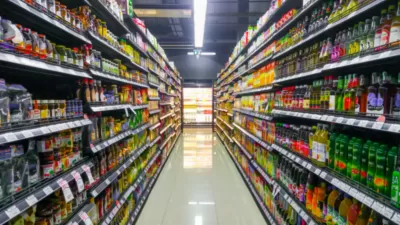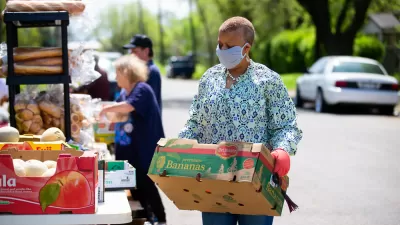As pandemic-era assistance programs expire, the rate of food insecurity for rural households is rising higher than in their urban counterparts.

“The percentage of rural households experiencing food insecurity grew by 4 points in 2022 to 15%,” as compared to a growth of 12 percent in metropolitan areas, reports Sarah Melotte for The Daily Yonder.
“The increasing gap between rural and urban food insecurity suggests that rural communities are struggling to bounce back from pandemic challenges more than their urban peers,” Melotte adds.
One aspect of growing food insecurity is the loss of free school meal programs, the cost of which can add up for a low-income family. “At the end of 2021, Congress also allowed the expiration of the expanded child tax credit. The credit cut child poverty in half during the first year of the pandemic. But new census data shows that child poverty doubled after the expansions ended.”
The article also attributes the higher rate to renewed work requirements for SNAP recipients and increases in the cost of living that “disproportionately hurt rural communities because they deal with both longer distances to grocery stores and higher fuel prices.”
FULL STORY: Food Insecurity Increased Faster in Rural Areas than Urban Ones Last Year

Trump Administration Could Effectively End Housing Voucher Program
Federal officials are eyeing major cuts to the Section 8 program that helps millions of low-income households pay rent.

Planetizen Federal Action Tracker
A weekly monitor of how Trump’s orders and actions are impacting planners and planning in America.

Ken Jennings Launches Transit Web Series
The Jeopardy champ wants you to ride public transit.

Washington Legislature Passes Rent Increase Cap
A bill that caps rent increases at 7 percent plus inflation is headed to the governor’s desk.

From Planning to Action: How LA County Is Rethinking Climate Resilience
Chief Sustainability Officer Rita Kampalath outlines the County’s shift from planning to implementation in its climate resilience efforts, emphasizing cross-departmental coordination, updated recovery strategies, and the need for flexible funding.

New Mexico Aging Department Commits to Helping Seniors Age ‘In Place’ and ‘Autonomously’ in New Draft Plan
As New Mexico’s population of seniors continues to grow, the state’s aging department is proposing expanded initiatives to help seniors maintain their autonomy while also supporting family caregivers.
Urban Design for Planners 1: Software Tools
This six-course series explores essential urban design concepts using open source software and equips planners with the tools they need to participate fully in the urban design process.
Planning for Universal Design
Learn the tools for implementing Universal Design in planning regulations.
Heyer Gruel & Associates PA
Ada County Highway District
Institute for Housing and Urban Development Studies (IHS)
City of Grandview
Harvard GSD Executive Education
Toledo-Lucas County Plan Commissions
Salt Lake City
NYU Wagner Graduate School of Public Service





























